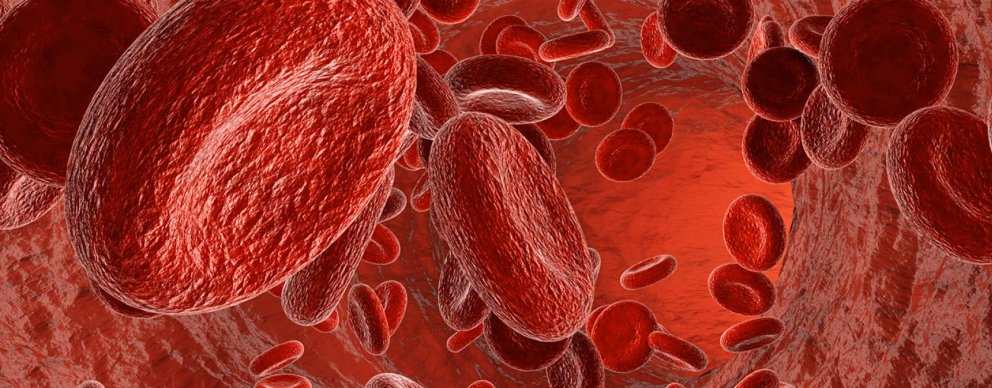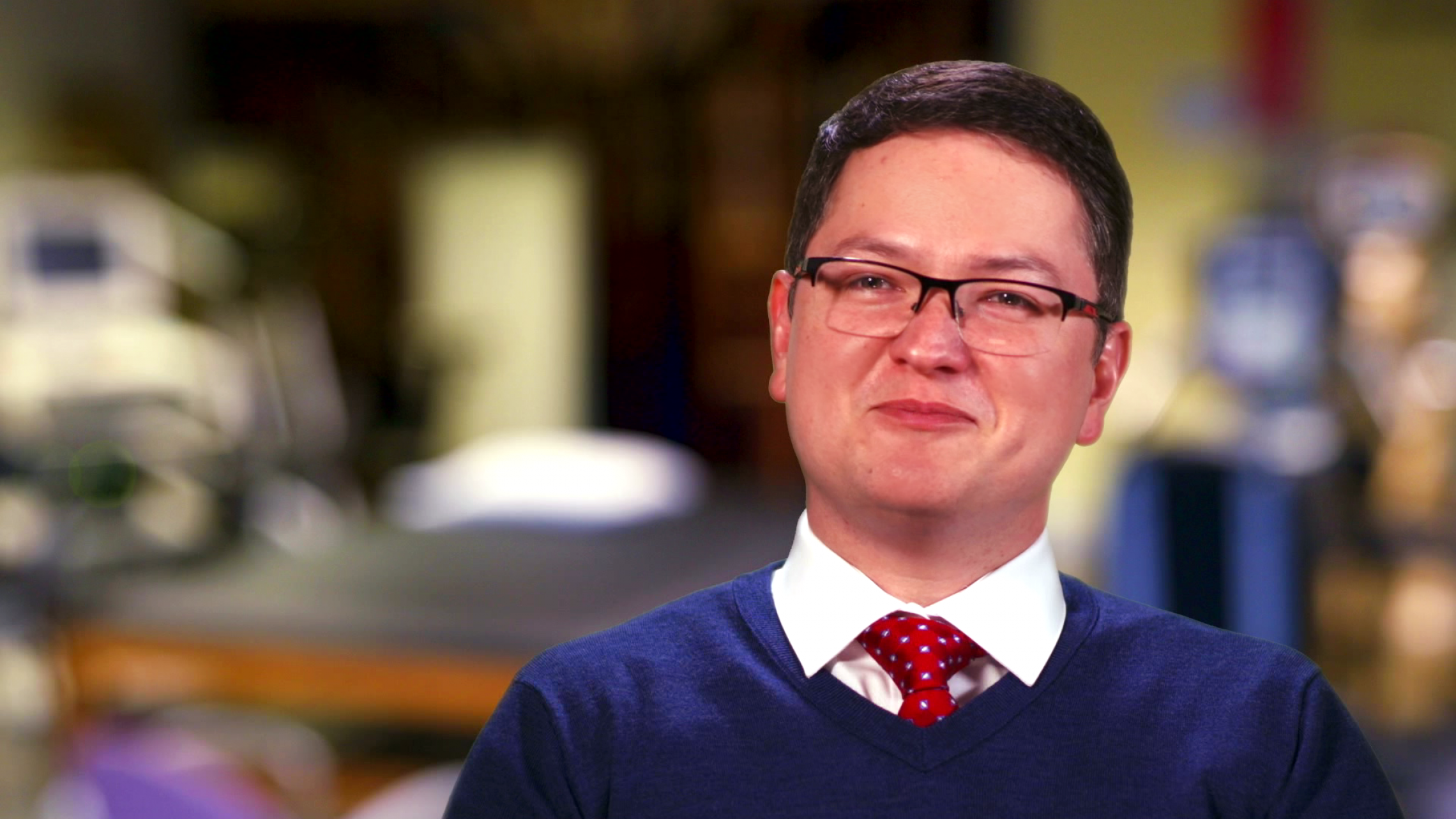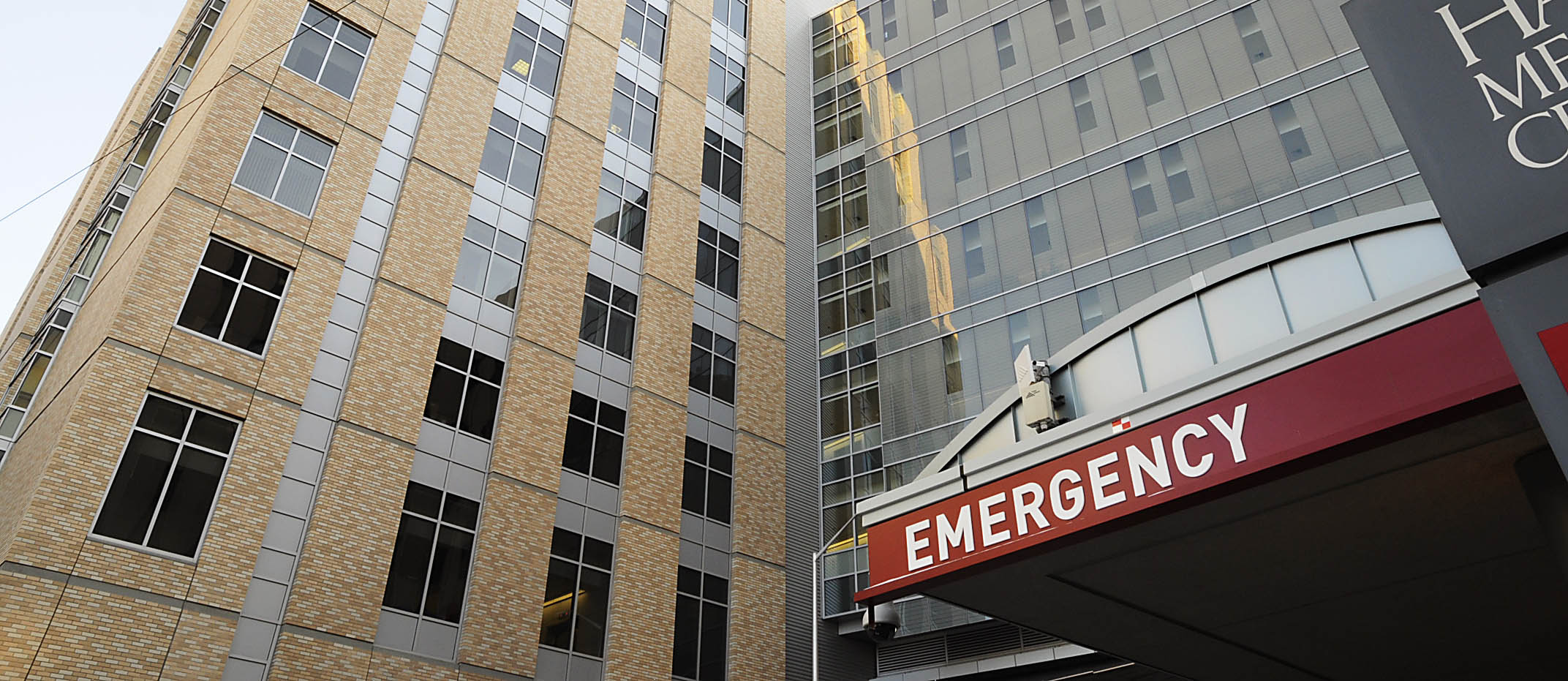Hematology
Evidence-based care for everything from blood disorders to blood cancer and rare diseases

Research, innovation and care are the lifeblood of what we do.
Beyond Cancer
Our care providers offer unparalleled expertise for the diagnosis of blood and bone marrow disorders as well as treatments for common disorders and the rarest hematologic diseases.
Advancing Cures
We offer a comprehensive, evidenced-based approach to care. Our hematology providers and researchers have contributed to several innovative, FDA-approved treatments that save lives.
Focused on You
Working jointly with the Fred Hutchinson Cancer Center, our internationally recognized team delivers effective treatments at multiple locations for patients from around the globe.

Meet the provider: Kleber Fertrin, M.D.
Dr. Fertrin is a hematologist who came to UW Medicine from Brazil in order to further his patient care and research efforts. View full bio.
Some of our common services
Anemia means you don't have enough healthy red blood cells to transport oxygen to your organs and tissues.
Iron-deficiency anemia develops when body stores of iron drop too low to support normal red blood cell (RBC) production. Inadequate dietary iron, impaired iron absorption, bleeding or loss of body iron in the urine may be the cause. A lack of iron can affect your body's ability to make red blood cells. If your iron level is too low, you could have anemia.
G6PD deficiency is an inherited condition. It happens when the body doesn’t have enough of an enzyme called G6PD (glucose-6-phosphate dehydrogenase). This enzyme helps red blood cells work properly. A lack of this enzyme can cause hemolytic anemia. This is when the red blood cells break down faster than they are made.
Hemolytic anemia is a disorder in which red blood cells are destroyed faster than they can be made. The destruction of red blood cells is called hemolysis. Red blood cells carry oxygen to all parts of your body. If you have a lower than normal amount of red blood cells, you have anemia. When you have anemia, your blood can’t bring enough oxygen to all your tissues and organs. Without enough oxygen, your body can't work as well as it should. Hereditary spherocytosis is a condition characterized by hemolytic anemia whose symptoms can range from mild to severe and can include pale skin, fatigue, heart palpitations, dizziness, anemia, jaundice, gallstones or enlargement of the spleen.
Phosphoglycerate kinase deficiency (PGK) is a genetic disorder that affects the body's ability to break down the simple sugar glucose, which is the primary energy source for most cells. The most common form is called the hemolytic form. It is characterized by a condition known as chronic hemolytic anemia, in which red blood cells are broken down prematurely. Chronic hemolytic anemia can lead to unusually pale skin (pallor), yellowing of the eyes and skin (jaundice), fatigue, shortness of breath and a rapid heart rate.
Sickle cell disease (SCD) is an inherited blood disorder. It’s passed down from a parent’s genes and causes the body to make abnormal hemoglobin. Hemoglobin is the protein in red blood cells that carries oxygen to all parts of your body. When you have SCD, your body’s tissues and organs don’t get enough oxygen.
Thalassemias are inherited blood disorders. "Inherited" means that the disorder is passed from parents to children through genes. Thalassemias cause the body to make fewer healthy red blood cells and less hemoglobin than normal. Hemoglobin is an iron-rich protein in red blood cells. It carries oxygen to all parts of the body. People who have thalassemias can have mild or severe anemia. Anemia is caused by a lower than normal number of red blood cells or not enough hemoglobin in the red blood cells.
Vitamin B12 deficiency anemia is a condition in which your body does not have enough healthy red blood cells, due to a lack of vitamin B12. This vitamin is needed to make red blood cells, which carry oxygen to all parts of your body. Without enough red blood cells, your tissues and organs don’t get enough oxygen.
Aplastic anemia occurs when your bone marrow doesn’t make enough red and white blood cells and platelets. Having fewer red blood cells causes hemoglobin to drop. Hemoglobin is the part of blood that carries oxygen through your body. Having fewer white blood cells makes you more likely to get an infection. And having fewer platelets makes the blood too thin. This means your blood can’t clot the way it should. Pancytopenia is a broader term which means a shortage of all three types of normal blood cells.
Bleeding disorders are a group of conditions that result when your blood cannot clot properly. When blood clots, it thickens to form a barrier between your body and the outside world, this is necessary to stop the current blood loss and prevent future infection.
Hemophilia is an inherited bleeding disorder. Children with hemophilia can’t stop bleeding because they don’t have enough clotting factor in their blood. Clotting factors are needed for blood to clot. Blood clots to prevent excessive bleeding. There are many blood clotting factors involved in the forming of clots to stop bleeding. Two common factors that affect blood clotting are factor VIII and factor IX. How severe a child’s hemophilia is depends on the level of blood clotting factors in his or her blood.
People with hypercoagulability have an increased risk for blood clots developing in the arteries. A clot inside a blood vessel is also called a thrombus. Blood clots in the veins can travel through the bloodstream and cause deep vein thrombosis (a blood clot in the veins) or a pulmonary embolus (blood clot in the lungs). Blood clots in the arteries can increase the risk for stroke, heart attack, severe leg pain, difficulty walking or even the loss of a limb.
This is a condition caused by too many platelets. Platelets are tiny blood cells that help your body form clots to stop bleeding. If one of your blood vessels gets damaged, it sends out signals that are picked up by platelets. The platelets then rush to the site of damage and form a plug, or clot, to repair the damage. Thrombocytosis is more common and is not caused by abnormal bone marrow. Instead, the cause is another disease or condition in the body that stimulates the bone marrow to make more platelets. Causes include infection, inflammation, some types of cancer, and reactions to medicines. Symptoms are usually not serious, and the platelet count goes back to normal when the underlying condition gets better.
Thrombocytopenia means that a newborn baby has too few platelets in his or her blood. Platelets are blood cells that help the blood clot. They are made in the bone marrow. The most common reason for thrombocytopenia is when a mother’s immune system makes antibodies against the baby’s platelets. This causes the platelets to break down too soon. Some babies who are very sick will also break down platelets too soon because of the illness.
Von Willebrand disease (VWD) is an inherited disorder that affects the blood's ability to clot. VWD is almost always inherited. People with the disorder may have low levels of a blood protein called von Willebrand factor, which helps the platelets in blood stick together to stop bleeding.
With immune thrombocytopenic purpura (ITP), you have a lower than normal amount of platelets in your blood. Platelets are blood cell fragments that help with blood clotting. Having fewer platelets can cause easy bruising, bleeding gums and internal bleeding. ITP is caused by an immune reaction against your own platelets. This means that your body’s immune system attacks your platelets by mistake. ITP is a fairly common blood disorder that both children and adults can develop.
Thrombotic thrombocytopenia purpura (TTP) is a rare and serious blood disease. Major symptoms may include a severe decrease in the number of blood platelets (thrombocytopenia), abnormal destruction of red blood cells (hemolytic anemia) and disturbances in the nervous system and other organs occur as a result of small clots that form in the smallest arteries. The exact cause of thrombotic thrombocytopenic purpura is unknown.
Blood vessel disorders are often caused by abnormalities in the arteries and veins that carry blood throughout the body. With proper care and maintenance, symptoms can be effectively managed.
Hereditary hemorrhagic telangiectasia (also called Osler-Weber-Rendu syndrome) is a disorder that results in the development of multiple abnormalities in the blood vessels. Nosebleeds are very common in people with hereditary hemorrhagic telangiectasia, and more serious problems may arise from hemorrhages in the brain, liver, lungs, or other organs.
Blood cancers affect the proper production and function of healthy blood cells. The majority of these cancers start in the bone marrow where blood is produced or the lymphatic system. When blood cells acquire a mutation in their DNA, those abnormalities can grow, overtaking healthy cells. In partnership with Fred Hutchinson Cancer Center, we’ll guide you through your blood cancer journey and employ the best possible team and care plan.
Acute myeloid leukemia (AML) is a type of leukemia that starts in very early or immature forms of white blood cells called myeloblasts (or blasts for short). It’s also known as acute myelogenous leukemia. In some cases, the leukemia cells can be early red blood cells called megakaryocytes. As the leukemia cells grow, they crowd out the normal cells in the bone marrow. This can lead to not enough of different types of healthy blood cells. People with AML have too many white blood cells in their blood. But these cells are not normal and don't help fight infections. In fact, people with AML often get more infections than people without it. AML can also lead to not enough red blood cells. This condition is called anemia, and it can cause fatigue. AML can lead to not enough platelets, too. This can lead to excess bleeding or bruising. AML is a type of acute leukemia. This means it tends to grow fast and needs to be treated right away.
Acute lymphocytic leukemia (ALL) is a type of leukemia that starts in very early or premature forms of white blood cells called lymphocytes. These immature cells are called lymphoblasts, or just blasts. The condition is also known as acute lymphoblastic leukemia. As the blasts grow, they can crowd out the normal cells in the bone marrow. This can lead to not enough of different types of blood cells. People with ALL have too many lymphocytes in their blood, but these cells are not normal and don't help fight infection. In fact, people with ALL are more likely to get infections. They can also have not enough red blood cells (anemia), which can cause fatigue. And they can have not enough platelets, which can lead to excess bleeding or bruising. ALL is a type of acute leukemia. This means it tends to grow quickly and needs to be treated right away.
Chronic myeloid leukemia (CML) is a type of leukemia that starts in myeloid stem cells in the bone marrow. It’s also known as chronic myelogenous leukemia. It starts in cells that normally help the body fight infections. There is a change in a chromosome in the cells of almost all patients with CML. It creates an abnormal gene called BCR-ABL. This causes the leukemia cells to grow out of control. As the leukemia cells grow, they can crowd out the normal cells in the bone marrow. This can lead to not enough of different types of blood cells. People with CML have too many white blood cells in their blood. CML is a type of chronic leukemia. This means it tends to grow slowly. CML does not always cause symptoms right away. Some people with CML have no symptoms when CML is diagnosed.
Chronic lymphocytic leukemia (CLL) is a type of non-Hodgkin lymphoma that starts in the lymphoid cells in the bone marrow. These are cells that normally help the body fight infection. As the leukemia cells grow, they can crowd out the normal cells in the bone marrow. This can lead to not enough of different types of blood cells. People with CLL have too many lymphocytes in their blood, but these cells are not normal and don't help fight infection. In fact, people with CLL are more likely to get an infection. CLL is a type of chronic leukemia. This means it tends to grow slowly. Many people with CLL do not have any symptoms when it’s first found.
This is a kind of non-Hodgkin lymphoma that attacks your blood and bone marrow. With hairy cell leukemia, too many stem cells in your bone marrow develop into abnormal lymphocytes. Lymphocytes are a type of white blood cell. The abnormal cells build up in your marrow, leaving less room for healthy white blood cells.
Also known as Hodgkin disease, Hodgkin lymphoma is a type of cancer that starts in the lymphatic system. When you have this disease, cells in your lymphatic system (usually in your lymph nodes) grow out of control. Lymph nodes are small collections of cells called lymphocytes in various places in your body, such as your armpits and groin, that help your body fight infection. The mass of extra cells form a tumor, and Hodgkin disease is unusual in that only a minority of the cells in the tumor are cancerous. Hodgkin lymphoma is one of the most curable forms of cancer.
Large granular lymphocytic (LGL) leukemia is a type of chronic leukemia affecting white blood cells called "lymphocytes." Lymphocytes are part of the body's immune system and help fight certain infections. LGL leukemia is characterized by enlarged lymphocytes, containing noticeable granules, which can be seen when the blood is examined under the microscope. There are two types of LGL leukemia: T-cell (T-LGL) and natural killer cell (NK-LGL). Each type may be chronic (slow-growing) or aggressive (fast-growing).
People with HIV infection are at least 20 to 70 times more likely to develop non-Hodgkin lymphoma, 10 times more likely to develop Hodgkin lymphoma, and 25 times more likely to develop anal cancer. They are also 5 times more likely to develop cervical and liver cancer and at least 3 times more likely to develop lung cancer than people who do not have HIV/AIDS.
Multiple myeloma is cancer that starts in plasma cells in your bone marrow. In multiple myeloma, normal plasma cells go through a series of changes that eventually cause excess cell growth. It can also cause tumors to form in your bones, and other health problems, like having too much calcium in your blood, low blood cell counts, kidney problems and frequent infections. Fred Hutchinson Cancer Center is internationally recognized as a center for multiple myeloma treatment and research and provides care to more than 500 people with myeloma each year.
Myelodysplastic syndromes (MDS) are a group of diverse bone marrow disorders in which the bone marrow does not produce enough healthy blood cells. MDS is often referred to as an acquired "bone marrow failure disorder."
There are many different types of non-Hodgkin lymphoma. Lymphoma is a kind of cancer that starts in the lymphatic system. With non-Hodgkin lymphoma, cells in the lymphatic system grow out of control. This most often happens in the lymph nodes. The mass of extra cells forms a tumor. Sometimes tumors form in the spleen or in other organs.
T-cell lymphomas are a type of non-Hodgkin lymphoma. They start in blood cells called T-lymphocytes. These are white blood cells that are part of your immune system. They normally fight infection in the body. T-cell lymphoma starts in lymph tissue which is found throughout the body, such as in the spleen, tonsils, bone marrow, intestines, and skin. Most skin (cutaneous) lymphomas are T-cell lymphomas. Cutaneous T-cell lymphoma causes scaly patches or bumps called lesions or tumors. The cancer is also known as lymphoma of the skin.
Waldenstrom macroglobulinemia is a rare type of non-Hodgkin lymphoma caused by high levels of monoclonal immunoglobulin M (IgM). Symptoms may include fatigue, weakness, unusual bleeding or bruises and weight loss.
A high iron level can be caused by hemochromatosis, a condition that makes it harder for your body to remove excess iron. It can also result from excess, but needed, red blood cell transfusions when used to treat anemia, as red cells contain a large quantity of iron. The extra iron builds up in various organs and can cause health problems.
Passed down through families, inherited marrow failure syndromes (IBMFS) affect your body’s ability to make healthy red blood cells, white blood cells and platelets. With recent advances in medical technology IBMFS can now be recognized in children and adults. Some of the inherited marrow syndromes for which we care are listed below.
Diamond Blackfan anemia (DBA) is a rare blood disorder. Children with DBA do not make enough red blood cells. These cells carry oxygen to all other cells in the body. Blood cells are made in the bone marrow, the spongy insides of long bones. In children with DBA, many of the cells that would have become red blood cells die before they develop. DBA may be passed down through families. Most children with this disorder have a gene defect.
Fanconi anemia is a very rare genetic condition. That means it runs in families—it is passed from generation to generation. The condition can affect your child's whole body. It can cause physical abnormalities, failure of the bone marrow, and organ defects. It also increases the chance of getting some cancers, especially of the blood or leukemia.
Shwachman-Diamond syndrome is an inherited condition that affects many parts of the body, particularly the bone marrow, pancreas, and skeletal system. People with Shwachman-Diamond syndrome have an increased risk of several serious complications related to their malfunctioning bone marrow. Specifically, they have a higher-than-average chance of developing myelodysplastic syndrome (MDS) and aplastic anemia, which are disorders that affect blood cell production and a cancer of blood-forming tissue known as acute myeloid leukemia (AML).
Leukocytosis is a condition that causes you to have too many white blood cells. White blood cells are part of your immune system and help fight infections and diseases. Causes of leukocytosis include infections, inflammation, tissue damage and bone marrow problems such as leukemia.
Lymphadenopathy means swelling of the lymph nodes or glands. These are the bean-shaped glands in the neck, armpits, groin, chest and abdomen. These glands act as filters for lymphatic fluid. This fluid contains white blood cells (lymphocytes) that help the body fight infection. Lymphadenopathy can occur in just one area of the body, such as the neck. Or it may affect lymph nodes throughout the body. The cervical lymph nodes, found in the neck, are the most common site of lymphadenopathy.
Myeloproliferative disorders are diseases of the bone marrow and blood. There are several types of myeloproliferative disorders and they can happen at any age, have no known cause and a wide range of symptoms.
Polycythemia vera is a rare blood disorder in which there is an increase in all blood cells, particularly red blood cells. The increase in blood cells makes your blood thicker. This can lead to strokes or tissue and organ damage.
Thrombocytosis is not caused by abnormal bone marrow. Instead, the cause is another disease or condition in the body that stimulates the bone marrow to make more platelets. Causes include infection, inflammation, some types of cancer and reactions to medicines. Symptoms are usually not serious, and the platelet count goes back to normal when the underlying condition gets better.
Myelofibrosis is a condition characterized by the buildup of scar tissue (fibrosis) in the bone marrow, the tissue that produces blood cells. Because of the fibrosis, the bone marrow is unable to make enough normal blood cells. The shortage of blood cells causes many of the signs and symptoms of myelofibrosis including anemia, fatigue and shortness of breath. Myelofibrosis is most commonly diagnosed in people aged 50 to 80 but can occur at any age.
Monoclonal gammopathies are conditions in which abnormal proteins are found in the blood. These proteins grow from a small number of plasma cells in the bone marrow. Plasma cells are a type of white blood cell whose main job is to fight off infection. The most common condition linked with these abnormal proteins is monoclonal gammopathy of undetermined significance (MGUS). It is not cancer. But people with MGUS have a greater risk of developing into a cancer called myeloma. Symptoms of myeloma may include low back pain, kidney damage, fatigue and weakness.
There are many types of white blood cells. Each type has a certain role. But their main job is to fight infection. Neutropenia is a condition in which a person has very low amounts of a type of white blood cell called a neutrophil. White blood cells attack harmful bacteria, viruses and fungi. If you have neutropenia, it will increase your risk of infections.
We treat a number of other hematological disorders at multiple locations for your convenience.
Amyloidosis is not considered cancer, but it is caused by abnormal plasma cells. It is similar to cancer of the plasma cells (multiple myeloma) and involves similar treatments. Fred Hutchinson Cancer Center has seen more than 300 new patients with primary or secondary amyloidosis in the past five years, utilizing providers from multiple fields, including hematology/oncology, cardiology, nephrology, neurology and others, to provide multidisciplinary treatment.
There are several autoimmune and immune disorders that affect blood and blood vessels. Even though some of these disorders may be life-threatening, effective treatments do exist.
Cold agglutinin disease is a rare type of autoimmune hemolytic anemia in which the body's immune system mistakenly attacks and destroys its own red blood cells. When affected people's blood is exposed to cold temperatures (32º to 50º F), certain proteins that normally attack bacteria attach themselves to red blood cells and bind them together into clumps. This eventually causes red blood cells to be prematurely destroyed leading to anemia and other associated signs and symptoms.
Langerhans cell histiocytosis is also called histiocytosis X. It is a condition in which the level of a type of immune cell, called a Langerhans cell, is abnormally high. In the past, Langerhans cell histiocytosis has been considered to be a type of cancer or a condition similar to cancer. Researchers are now discovering that it is more likely tied to an autoimmune response and happens when the body's immune system attacks itself.
Hypereosinophilic syndrome (HES) refers to a group of diseases that are characterized by an excessive amount of eosinophils. Eosinophils are a variety of white blood cells and one of the immune system components responsible for combating multicellular parasites and certain infections.
Mastocytosis occurs when too many mast cells accumulate in the skin and/or internal organs such as the liver, spleen, bone marrow and small intestines. Mast cells are a type of white blood cell in the immune system and are responsible for protecting the body from infection and releasing chemicals to create inflammatory responses. There are two main forms of mastocytosis. Cutaneou mastocytosis only affects the skin and is more common in children. Systemic mastocytosis affects more than one part of the body and is more common in adults.
Paroxysmal nocturnal hemoglobinuria (PNH) is an acquired disorder that leads to the premature death and impaired production of blood cells. The disorder affects red blood cells, which carry oxygen; white blood cells, which protect the body from infection; and platelets, which are involved in blood clotting. PNH affects both sexes equally and can occur at any age, although it is most often diagnosed in young adulthood.
High blood protein is not a specific disease or condition. Certain proteins in the blood may be elevated as your body fights an infection or other inflammation. People with certain bone marrow diseases, such as multiple myeloma, may have high blood protein levels before they show any other symptoms.
Porphyrias are rare disorders that affect mainly the skin or nervous system and may cause abdominal pain. These disorders are usually inherited, meaning they are caused by abnormalities in genes passed from parents to children. When a person has a porphyria, cells fail to change body chemicals called porphyrins and porphyrin precursors into heme, the substance that gives blood its red color.
Post-transplant lymphoproliferative disorder is the most common malignancy, with the exception of skin cancer, after solid organ transplant in adults and occurs in up to 10 percent of patients. The incidence varies according to the transplanted organ, and in the majority of cases, particularly those occurring less than 1 year after transplantation, are associated with Epstein-Barr virus.
When blood has too many lymphocytes the spleen can become swollen or enlarged. This is called splenomegaly. Lymph nodes may also be larger than normal. Splenomegaly can occur anytime from early childhood to adulthood.
Convenient care, in your neighborhood.
Hematology/Oncology Clinic at Harborview
Medical Specialties
Hours Today
Appointments
Oncology & Hematology Clinic at Valley
Hours Today
Appointments

Should I go to the emergency room or urgent care?
If you have an illness or injury that you think may be life-threatening without immediate care, call 911 or go to the nearest emergency room.
If you have an illness or injury that is not life-threatening but needs attention today, go to urgent care.

